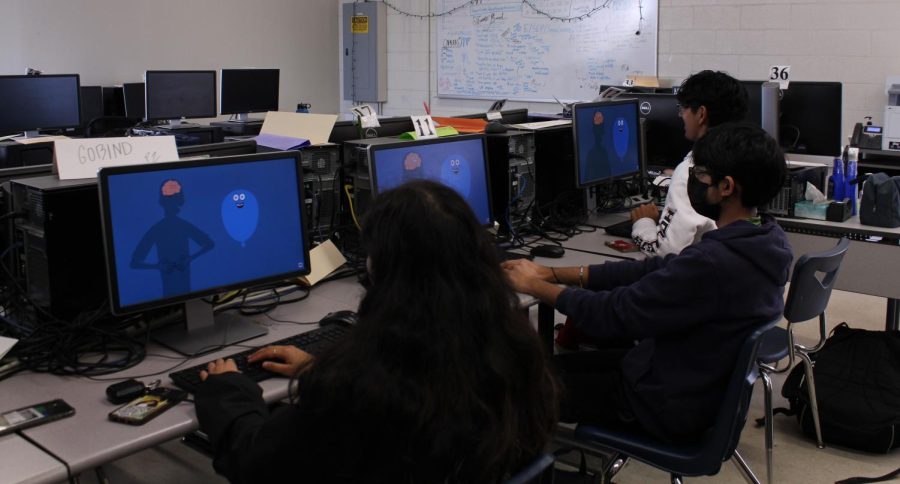Irvington Voices Concerns Over i-Ready Diagnostic’s Effectiveness
Students take a brain break with the balloon breathing exercise during the i-Ready English Diagnostics
In 2021, the Fremont Unified School District implemented the i-Ready system, an online program presented by the company Curriculum Associates which provides adaptive assessments the district uses to test high school students’ reading levels at the beginning, middle, and end of year. Despite i-Ready’s math assessment, only the reading segment is used since the district judged the adaptive testing to be less suitable for math. The reading diagnostic includes three sectors: vocabulary, literary comprehension, and comprehension of informational text. Just recently, the students of Irvington have taken their second i-Ready test of the 2022-2023 school year, bringing mixed reactions about the exam.
Although the program is relatively new to high schoolers in the district, the system has been in use for grades 1-8 since Fall 2020. In a presentation by the district, the results from the i-Ready system in the year 2020-2021 were compared to another diagnostic test, the Smarter Balanced Assessment Consortium (SBAC), and claimed to have provided closer and more consistent scores.
However, the same questions on each quarterly i-Ready exam have raised doubts on the effectiveness of the test’s evaluation.
“I remember last time I took the i-Ready test, I finished it so early because I remembered the passages from doing it previously,” said Michelle Lin (11), a current AP English Language and Composition student.
Mrs. Hallford, an English 9 Honors and AP Literature and Composition teacher, echoed many students’ concerns about the test’s repetition.
“If [i-Ready had] new tests at the same reading level but new and different passages, then I think it would be more accurate,” said Mrs. Hallford. “But I think it loses its accuracy if it’s the same testing material being given again and again.”
The possible faultiness with assessment results poses the question of whether this data can be accurately used for teachers and the district. Fremont Unified currently has many areas where they are planning to use the data from the tests.
“At the school or district level, results may be used to determine which student groups may benefit from intervention or enrichment,” said Mr. Wasser, the Director of Assessment and Accountability for the Fremont Unified School District. “Results can also be used to objectively validate the excellent instruction and student work that takes place daily within Fremont Unified.”
Despite the criticisms about the program, other students have thought the diagnostic to be helpful.
“The current i-Ready tests are a lot smoother to do,” said Thomas Nhin (11), an English 11 student. “They don’t really feel too stressful.”
While the new i-Ready system does incorporate aspects that make the test-taking experience more comfortable, improvements can be further made in the i-Ready system and its frequency to better test students’ English levels.
“I think it would be appropriate at the beginning and at the end of the year to show progress throughout the year,” said Mrs. Hallford. “But again, it’s really only valid if it’s a new test.”
In a conversation with Mr. Wasser, the issues students experience were brought up. As the district does meet often with representatives from i-Ready, Mr. Wasser said that he will work to address the concerns. In the future, there is a possibility for a more accurate test to be presented to students.








